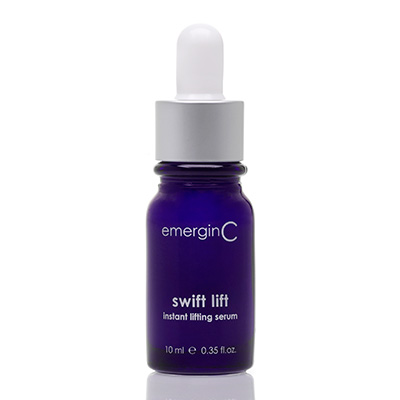Have you ever had a client lodge a complaint against your salon, spa or clinic because they weren’t happy with the outcome of their treatment?
Then you’ll know it’s a tricky and stressful event, especially when, from your perspective, you followed treatment protocol to the letter and delivered on what you promised.
Unfortunately, even if you haven’t caused an injury or misled a client, you could still find yourself at the pointy end of legal action, impacting your business in financial and reputation terms.

According to Dr John Flynn, a leading cosmetic surgeon and Chief Censor of the Australasian College of Cosmetic Surgery (ACCS), around 70 percent of medico-legal complaints go against the practitioner/therapist because of inadequate or improper consent, even if technically they have done nothing wrong.
Ergo, if you don’t have solid proof of having given your clients “informed consent”, the odds are that a judgement will go in favour of a complainant.
Dr Flynn regularly presents around the country on the topic of the importance of informed consent – SPA+CLINIC attended his presentation at the Cutera University conference in Sydney in February – something he is passionate about.
His audience is primarily fellow doctors and their staff but we saw that Dr Flynn’s words of wisdom have relevance across the aesthetics and wellness spectrum.
WHAT IS INFORMED CONSENT?
No matter how well trained, skilled and experienced your practitioners and therapists may be, things don’t always go to plan – at least, in the eyes of a client.
This means not having a patient/client just fill out a standard consent form and go guns blazing. Proper documentation and counselling of patients/clients is important in any informed consent.
It must be preceded by disclosure of sufficient information. Consent can be challenged on the grounds that adequate information was not revealed to enable the client to take a proper and knowledgeable decision.
It cannot be a client’s signature on a dotted line obtained routinely by a staff member.

When you are talking about side effects such as, say, bruising, redness or swelling, it is not enough to just leave it at that, according to Dr Flynn.
“You need to go deeper, to explain very clearly or even present photographic examples to show `what this means is …’, so the patient isn’t under any misconception as to how side effects can manifest.
“It could mean explaining that bruising, swelling or redness could be mild or severe and last from a few hours or days to a week or more, and why these symptoms occur.
“So if a patient comes back to you upset that side effects have been more severe or lasted longer than they imagined, you then have the opportunity to say: `Remember, we talked about that …’.”
In the unfortunate event that, eg., a patient/client is burned and develops blisters or scars after laser, IPL or a peel, or suffers hypo- or hyperpigmention despite all due care, if you have not explicitly explained what these risks could entail, your footing will be very shaky.
Informed consent also means explaining to a client that they may just not achieve the result they desire. Some people are “responders” to treatments, and others simply aren’t. It all comes down to individual physiology and factors like age, skin type and texture, weight and body shape (for fat loss and contouring treatments).
An all-encompassing consent to the effect “I authorise so-and-so to carry out any procedure in the course of my treatment” is not valid. It should be specific for a particular event.
If, for instance, consent is taken for microdermabrasion, it’s not valid for any other procedure like an acid peel. Additional consent will have to be obtained.
RISK REDUCTION REMINDERS
 The following points can assist you in managing risk:
The following points can assist you in managing risk:
- Assess if the client appears to understand the information being provided. Address any language, cultural or cognitive barriers to good communication.
- Discuss their concern with them and your assessment of the likely outcome of treatment. If, for instance, they suffer from severe melasma – a form of pigmentation notoriously difficult to treat – and you have doubts that the treatment will be successful (at least, as successful as the client is hoping), share this uncertainty, the reason for it, and what possibilities are being considered for treatment.
- Discuss the proposed treatment, including the risks (eg. in the instance of melasma, of causing loss of, or even deeper pigmentation) in clear and understandable language. Inform patients about other reasonable options for treatment and related risks.
- Inform clients if part or all of a treatment is to be delegated to members of staff other than you.
- Ask clients if they have any concerns. Give them the opportunity to ask questions. Answer the questions and assess that they appear to understand.
- Even when patients wave aside all explanations or seem prepared to submit to the procedure or treatment without discussion, explain that the risks should still be discussed.
- Print material, videos and other handouts can all support the consent discussion but do not replace it.
- Document the consent discussion in your records in a timely manner. Written consents are preferable in situations involving ongoing treatments, and where there are more-than-average risks with a cosmetic procedure. The failure to adequately document the consent discussion is a recurring theme in medico-legal cases.
BEWARE KNOW-IT-ALLS

As the old saying goes … a little knowledge is a dangerous thing.
“Dr Google” has become the universal go-to for people diagnosing and treating their own aesthetic concerns (and the results often aren’t pretty) or deciding on their own course of treatment that you should carry out.
With the hype created via Dr Google, in print and visual media regarding “beauty” and “shape, size and appearance of body parts” and so forth, they can front up to a salon, spa or clinic armed with a swag of “knowledge”.
Whether it is accurate, complete, balanced or suited to their individual needs is an entirely different matter.
“Under-questioning [clients’] impulse decisions can make or break your business,” says Dr Flynn.
“The greatest enemy of knowledge is not ignorance but the illusion of knowledge, as Dr Stephen Hawkings has famously said.
“Consumers will often come to us telling us what they `need’. Some practitioners may be intimidated by this approach or just want clients to be happy – more unethical ones just see the opportunity to make more revenue – rather than doing what’s best.”
This is a recipe for disaster. You have a right to say no if you do not believe a treatment is right for a client. Remember that, in the end, it will also rebound on you.
DON’T STICK YOUR HEAD IN THE SAND

As unpleasant, even frightening as it is to have a client on the warpath unhappy with their results, as unreasonable as you might think they are (or indeed are) being, don’t ignore them and hope it will go away.
The longer you postpone dealing with a bad situation, the worse it can get – and even provoke legal action that could have been avoided.
Remember that maintaining as good relationship with clients as possible often works better than the best informed consent in these situations!
Invite them to your office (if they have made the complaint by phone or email) and sit them down for a discussion, so you can assess the situation close up. Offer niceties like coffee or tea and be convivial as possible.
Hear them out, making notes and asking pertinent questions. Try to avoid becoming defensive or responding to inflammatory accusations or behaviour – unless of course it becomes so intolerable that it would be best you politely asked them to leave.
Take photos of the client to record the issue that they are unhappy about (to this end, it is best that you have taken photos before treatment so you have a reference point).
Without admitting culpability, offer remedial suggestions – unless you truly believe their complaints are fabricated or without foundation.
Document your notes and photos and call your insurance provider and/or legal advisor re further steps.
COSMEDIC.COM.AU (DR FLYNN); ACCS.ORG.AU; CUTERA.COM




